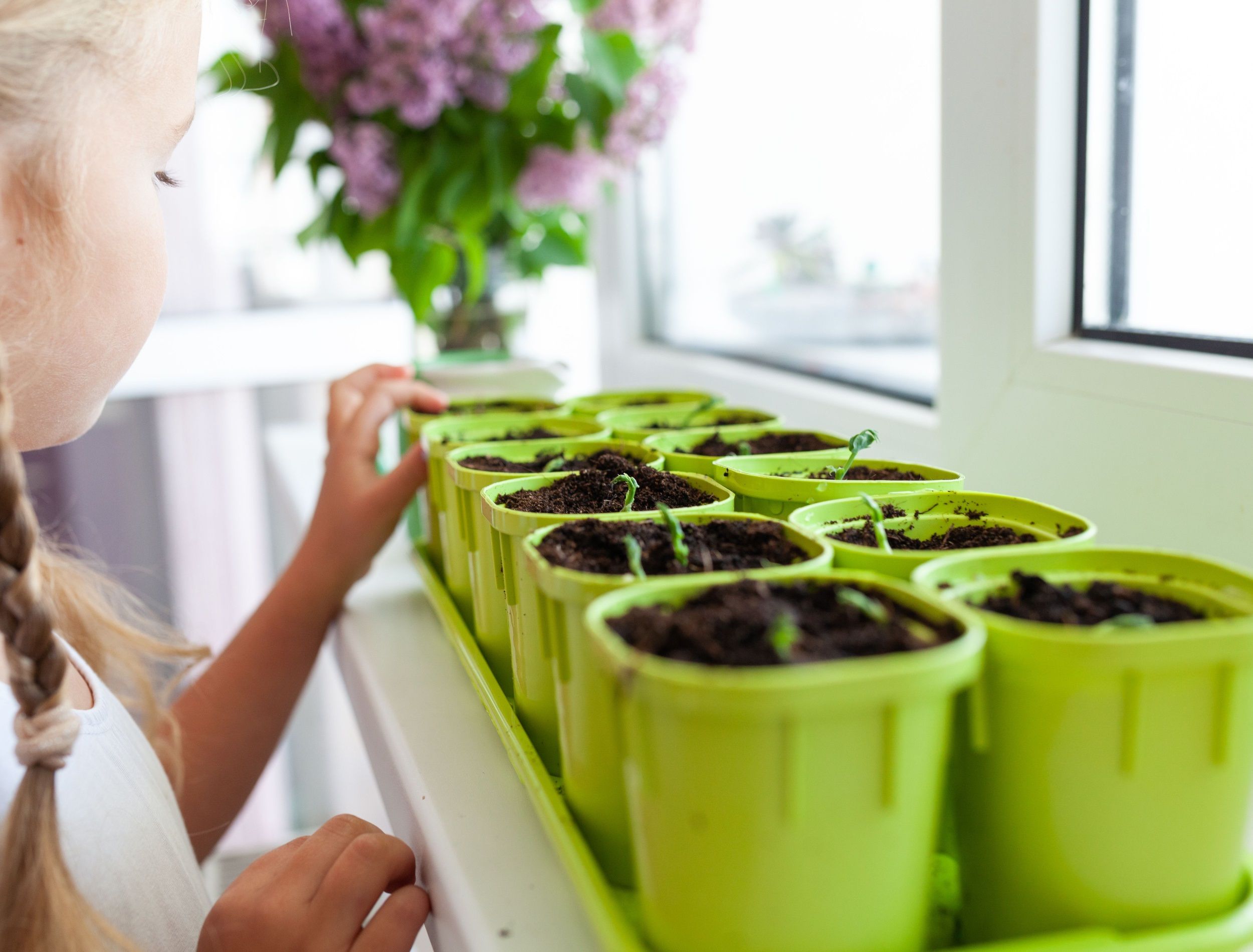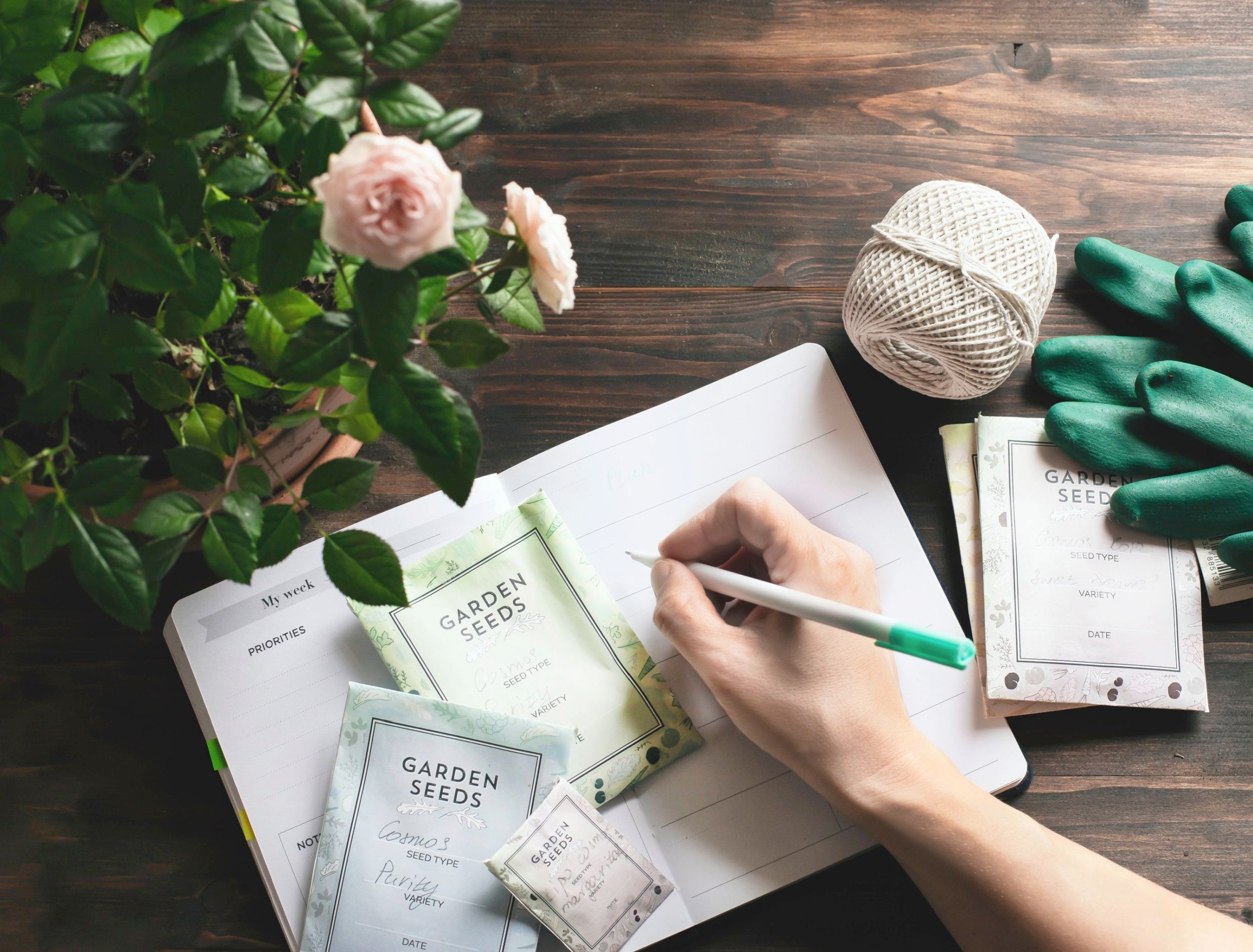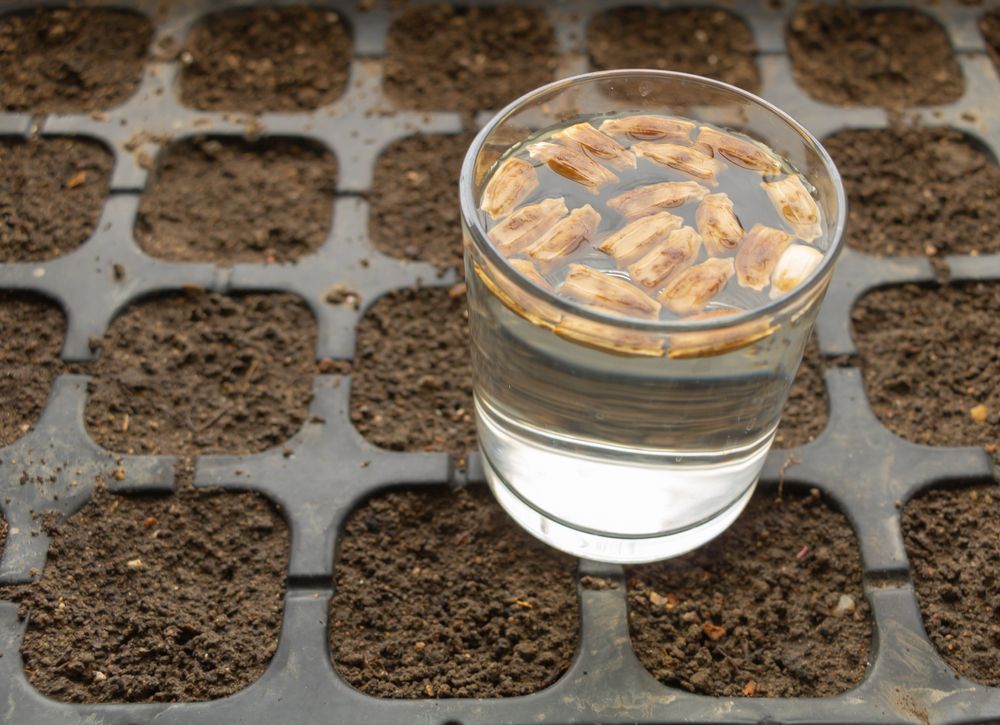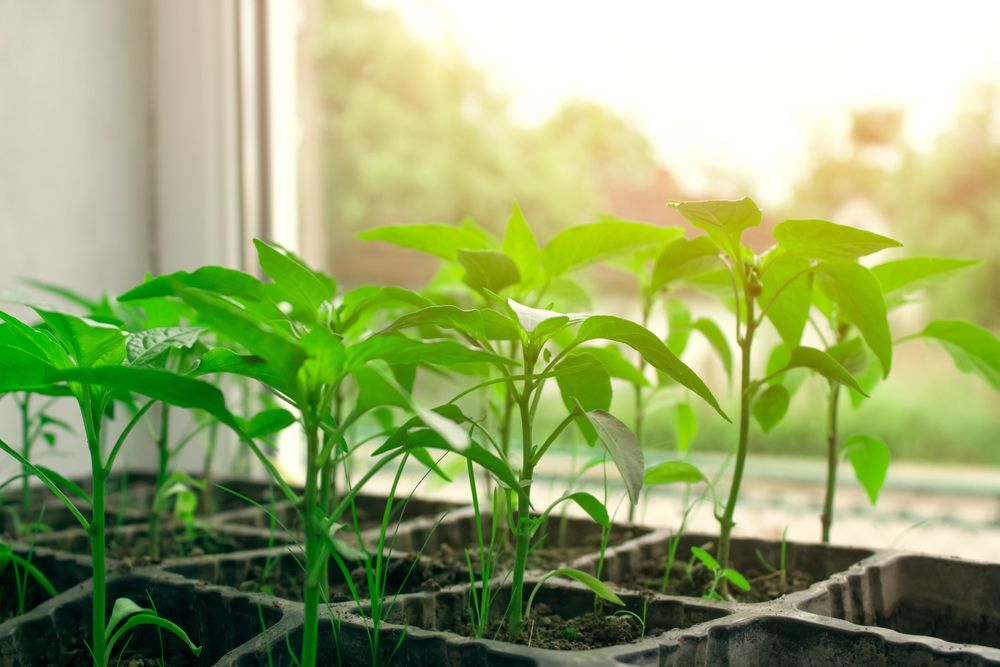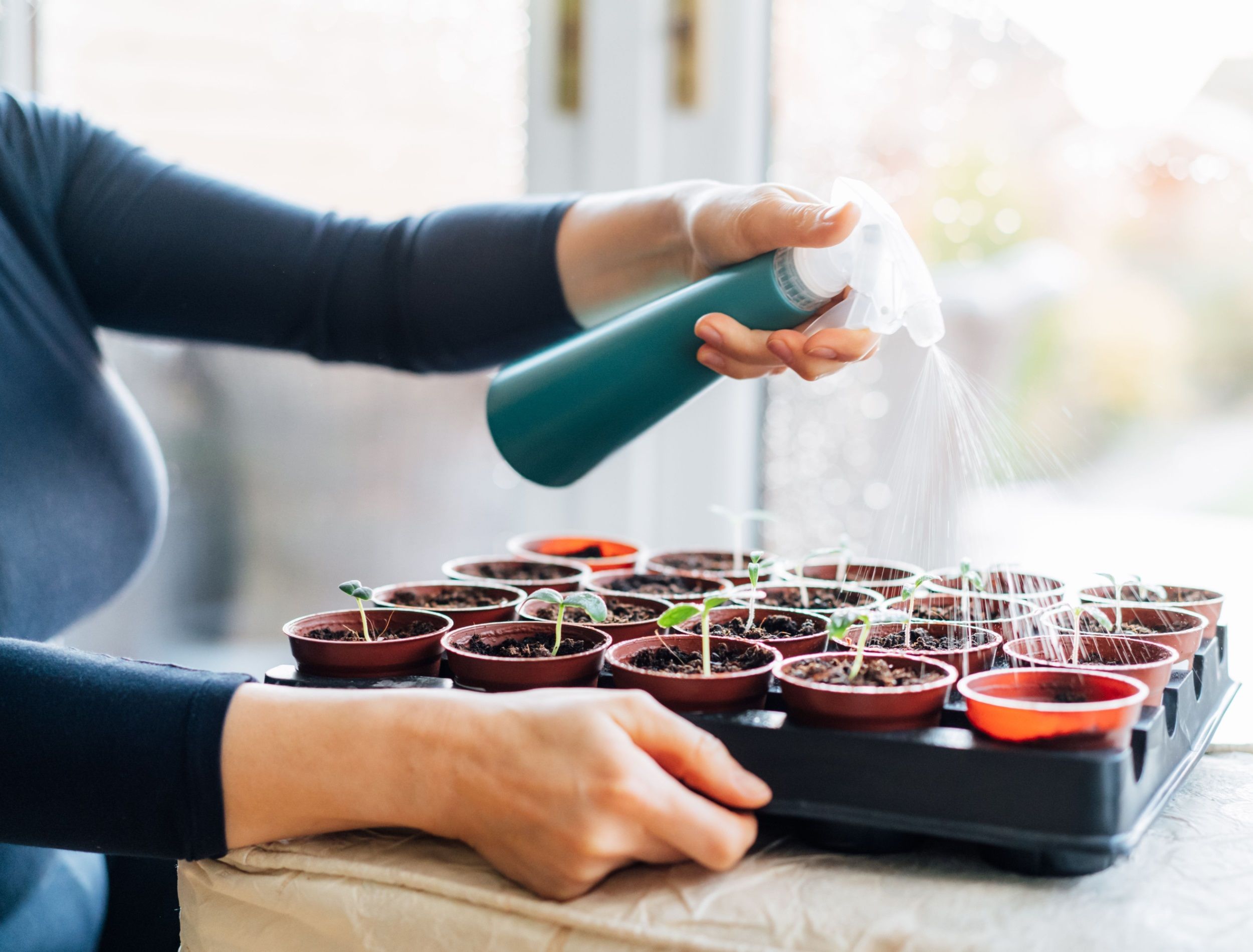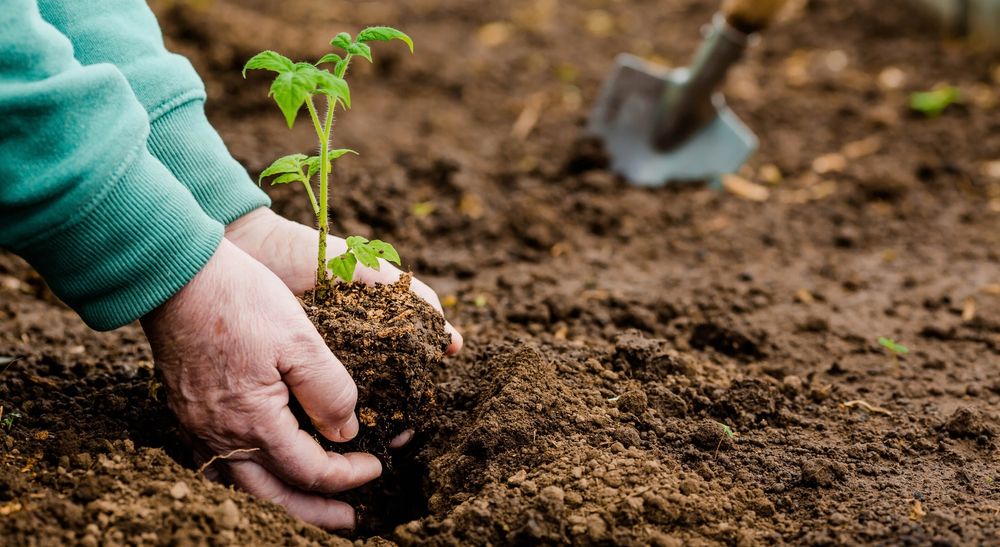Growing plants from seeds can be a tricky but rewarding process. It takes the right amount of time and planning to ensure your seeds grow happily. While you can purchase plants and seedlings from garden centers, they don't always have the varieties of plants you want, nor do they offer the same satisfaction of growing something completely on your own. That's why starting your garden from seed is a great choice.
If you want to successfully grow plants from seeds, there are a number of tips to keep in mind. From planning your garden in advance to properly preparing and planting your seeds, learn all the best tips and tricks to bring your garden to life.
Plan Ahead
Image credits: Evgenia Tuzinska via Shutterstock
Whether it is your first-time growing plants from seeds, or you consider yourself well-versed in the world of seed-starting, planning ahead is essential to a successful garden. This means choosing seeds based on your zone, the time of year, and your crop rotation.
For example, if the final frost is near, start warm-season plants like tomatoes, squash, and zinnias so you can transplant them in spring. If you are looking to establish a fall garden before the final frost, plant cool-season plants. Popular varieties include pansies, broccoli, and cabbage.
It is also crucial to consider how the plants will fit into your garden, so pay attention to which plants grow well together and which plants don't. Plants that make good companions include basil, tomatoes, and sweet peppers. Plants you should avoid putting next to each other include sunflowers and shade-loving plants such as bluebells and begonias.
If a few too many of your favorite plants have different growing requirements, consider planting in containers and keeping them separate.
Soaking Seeds
Image credits: Gheorghe Mindru via Shutterstock
Some seeds require soaking before planting as it helps them to absorb moisture for faster germination. Plants that require soaking include hibiscus, pumpkin, and sunflowers. Soak the seeds for about one to two days in water that is 140 to 194 degrees Fahrenheit. Plants that do not benefit from soaking include cauliflower, mint, and petunias.
If you are using seeds from last year and aren't sure if they are still viable, do a germination test. Take 10 seeds from one batch and place them on a damp paper towel. Roll the paper towel up and place it in a jar, ensuring there is some water at the bottom. Place in a warm location and check them every few days. In 10 days, check what has germinated. If seven of the seeds germinated, you have a 70 percent germination rate.
Proper Planting
Image credits: Iryna Mylinska via Shutterstock
Properly planting seeds is crucial to the development of seedlings. Before planting, consider the required soil depth, if they need light, and if you are going to germinate indoors or outdoors. The depth at which you plant the seeds is usually twice their diameter. Read the seed packet to determine the depth of planting and if your seeds need light.
Some seeds, such as begonia, lettuce, and petunia, benefit from direct exposure to light and you should not cover them. Seeds such as calendula, annual phlox, and verbena require darkness, so be sure to cover them with the planting media. Once seedlings emerge, always provide light, either placing the plant by a bright window or providing supplemental light with grow lights for 12 to 16 hours per day.
If you are germinating seeds indoors, plant them about six to eight weeks before it is time to transplant. When you transplant depends on the specific plant and if it is warm enough for it to survive outdoors. If you are sowing outdoors, make sure you know the temperatures required for germination -- As a general rule of thumb, seeds typically require temperatures between 65 to 75 degrees Fahrenheit to carry out the process.
For example, tomatoes require temperatures between 50 to 95 degrees Fahrenheit to germinate, though you should not put them outdoors in temperatures below 60 degrees Fahrenheit. To ensure it is warm enough, sow tomato seeds indoors about five to six weeks before the last predicted frost and transplant outdoors once it is warm enough and the seedlings are about 6 inches in height.
Remember that some vegetable and root crops, such as carrots, corn, and beans, are best planted directly where they will be grown because of their extensive root systems. Fortunately, they tend to withstand cooler temperatures better.
Provide Adequate Moisture
Image credits: Okrasiuk via Shutterstock
Proper watering is critical to the health of your seedlings. Without adequate moisture, your seeds won't germinate. With too much water, your seeds can rot. When first planting, ensure the soil is evenly moist. Once planted, keep the soil of indoor and outdoor plantings moist by misting with a spray bottle, being sure to never completely soak the soil. Check the soil daily to ensure it is moist.
Watering in the early morning is best to prevent water evaporation and ensure the soil doesn't dry out during the warmest time of day. Hold the spray bottle far enough away as to not the disturb the seeds, evenly distributing the water.
Pro Tip: Keep humidity levels high by covering seed starting pots and trays with a layer of plastic wrap, a plastic bag, or a clear dome. Remove the covering once seedlings emerge.
Check Your Soil
Image credits: PhotoJuli86 via Shutterstock
Whether you are planting in the ground or in seed starting trays, the soil you use plays a role in whether the seeds germinate. Sterile, soilless potting media is best for germination. Sterility is especially important to ensure there are no weeds or damaging organisms in the mix, which can be detrimental to seeds as they germinate.
Do not use garden soil as it is too dense, could contain weeds, pests, and diseases, and holds onto moisture too much. Mixes that include sphagnum peat moss, sand, and vermiculite are ideal. Make your own seed starter by mixing 4 quarts of shredded sphagnum peat moss, 4 quarts of vermiculite, and 2 tablespoons of ground limestone.
Get Growing!
The best thing to remember when growing plants from seeds is to be patient, it is worth the wait! You won't grow flowers or vegetables overnight, but you will enjoy the process of growing something beautiful from a tiny seed. Remember to pay attention to what your specific plant needs, soaking and germinating indoors if necessary, and providing the right amount of water and soil to help the plants thrive.
Do you have any tips for growing plants from seeds? Share in the comments below!

